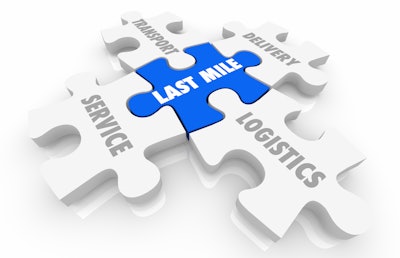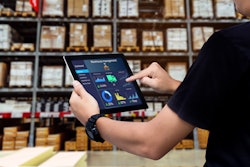
Having real-time communication about pending deliveries is one of the most important factors for consumers when shopping their favorite brands. From the point of purchase to order fulfillment and delivery, there are multiple opportunities for retailers to communicate with their customers and ensure the highest level of service every single time. This level of service and communication ensure customer retention, one of the greatest priorities for retailers in today’s consumer-driven market.
Particularly within the food and grocery space, last-mile technology and comprehensive post-purchase communication, including retail-branded tracking pages, personalization's and delivery updates, among others, are vital in ensuring the quality of the product once it’s in the hands of the customer. Not only do these solutions contribute to customer satisfaction, but most importantly, they drive customer retention. Here’s a breakdown of how grocery retailers can benefit from post-purchase communication by integrating last-mile technology and improving customer loyalty.
Product freshness
When it comes to online grocery shopping, a common concern among consumers is quality and freshness of food. While shoppers are not physically at the store to make their product selections, their expectation for sufficiently fresh foods remains the same. Geofencing capabilities featured in omnichannel networks instantly solve this issue by sending a notification to the grocer when the customer is on their way to the store and queues an employee to start packaging their order for pick up.
Likewise, shoppers who opt for same-day delivery will receive an alert as their order progresses closer to completion, from the moment an employee begins preparing the order to when it will land on their doorstep. While these automated messages enhance the customer experience by keeping them apprised of the status of their order, grocers can also maintain the flow of day-to-day operations and accurately time order fulfillment.
Better refrigerator coordination
The span of freshness in food and groceries post-purchase is significantly less than that of other non-perishable items. While most grocers will pull the product as soon as possible, retailers that have access to their customers’ estimated arrival time will strategically package the order at just the right time, helping the grocer develop better refrigerator coordination to maintain the quality of goods every single time.
Ongoing communication about the status of their order, such as text or email alerts, gives customers the impression that the retailer has not abandoned them. Personalized post-purchase notifications reassure customers that they will receive only the best quality of produce. From the point of sale to order fulfillment, grocers must remember to engage their customers throughout the buying process.
Pick-and-pack management
Now more than ever, it’s imperative for retailers in the food and grocery space to integrate last-mile systems to ensure seamless pick and pack procedures within their warehouses. The volume and growth of online sales increase each day due to most consumers’ preference for online shopping versus in-store. Retailers now face the challenge of meeting the demand for instant gratification, making speed one of the most important trends in the retail industry for 2022.
By staying in constant communication with the customer, grocers can quickly remedy any issues that occur behind the scenes and even anticipate potential obstacles that may arise in the future. Through last-mile and omnichannel integration, grocers have the opportunity to build a strong rapport with customers and create a name for themselves as a trustworthy brand.
Post-purchase communication
Most brands consider their customer interaction to be complete once the customer makes their purchase; however, this couldn’t be farther from the truth. Prior to the development of last-mile technology, the customer experience ended as soon as an order was made and the customer was passed onto an entirely different entity to handle the delivery process. By implementing last-mile unification software, retailers can continue engaging with their customers through automated email notifications on their delivery status or even product recommendations based on the items they viewed to encourage additional purchases.
Proactive communication, including post-purchase, with customers is vital to ensure they are satisfied with the service they are receiving every step of the way. Retailers must view post-purchase communications as a direct extension of their brands rather than something to be neglected. With Delivery Solutions, the grocery industry now has access to innovative features, like white label services, in addition to the benefits of maintaining product freshness, refrigerator coordination and pick-and-pack operations. Grocery retailers are now in the unique position to extend their conversations with customers beyond the food and grocery sector by making themselves known as well-trusted brands.
As product demand grows, so must retailers learn to grow around their customers. While emergent technologies within last-mile delivery are proven to make their processes more efficient, retailers must first understand their customers’ needs and place the customer experience at the forefront of their strategy.




















